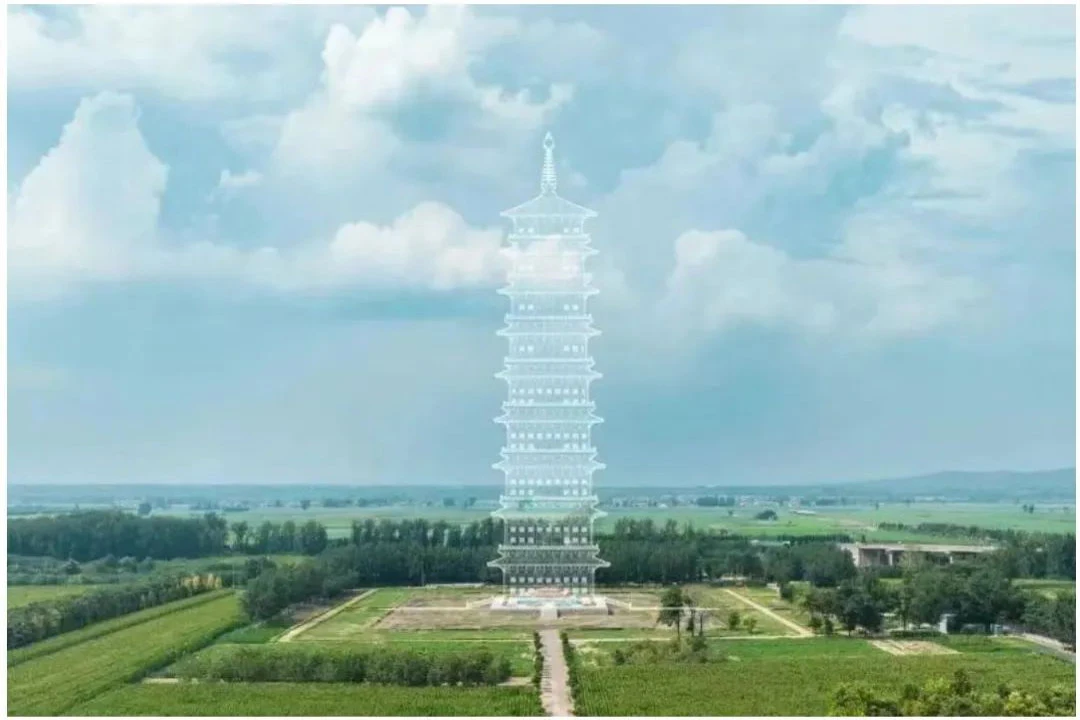Throughout history, the human spirit has always sought to touch the heavens, and ancient Chinese architecture is no exception. In the skyline of ancient Chinese cities, towering pagodas often dominated the landscape, representing not only spiritual aspirations but also architectural marvels of their time. Among the most significant of these towering structures were the Yongning Temple Pagoda and the Yingxian Wooden Pagoda. These awe-inspiring edifices were not just religious monuments; they were the ancient Chinese version of “sky castles,” embodying the dreams and ambitions of a civilization reaching for the skies.
The Quest for Height: Yongning Temple Pagoda (永宁寺塔)
Pagodas in ancient China were deeply intertwined with Buddhism, a religion that profoundly influenced Chinese culture and architecture. As Buddhism took root in China, it brought with it the concept of the stupa, a mound-like structure originally used in India as a tomb for relics. In China, this simple form evolved into the multi-tiered pagoda, a structure that stretched ever upwards in a symbolic journey towards enlightenment.
The Yongning Temple Pagoda, built during the Northern Wei Dynasty, stands as a testament to this quest for height. This nine-story pagoda, constructed primarily of wood, was said to have reached a staggering height of 90 meters, making it the tallest structure of its time. Located in the ancient capital of Luoyang, the Yongning Temple Pagoda was an architectural and spiritual beacon. It was not merely a religious symbol but also a demonstration of the engineering prowess of its builders.
According to historical records, the Yongning Temple Pagoda was so tall that it allowed those who ascended it to gaze over the imperial palace and the entire city of Luoyang. It was a symbol of imperial power and divine protection, embodying the belief that the closer one was to the heavens, the more powerful and sacred they were. However, this magnificent structure was short-lived, as it was struck by lightning and burned down just 16 years after its completion. Despite its brief existence, the Yongning Temple Pagoda left an indelible mark on Chinese architectural history and the collective memory of a society striving to connect with the heavens.
The Limitless Reach of Wood: The Yingxian Wooden Pagoda (应县古塔)
While the Yongning Temple Pagoda represented an early and ambitious attempt to reach the skies, the Yingxian Wooden Pagoda, built during the Liao Dynasty, remains the pinnacle of ancient wooden architecture. Standing at 67 meters tall, this pagoda, also known as the Sakyamuni Pagoda, is the tallest and oldest surviving wooden pagoda in the world.
Constructed in 1056, the Yingxian Wooden Pagoda is a marvel of engineering and a testament to the ingenuity of ancient Chinese craftsmen. Unlike many other pagodas of the time, which often incorporated a central pillar for structural support, the Yingxian Pagoda relies on a complex system of interlocking wooden beams and columns, known as "dougong" brackets. This intricate construction method allowed the pagoda to withstand centuries of earthquakes and harsh weather, standing as a resilient symbol of both spiritual devotion and architectural brilliance.
The Yingxian Wooden Pagoda’s design reflects a harmonious balance between form and function. Each of its five visible stories is octagonal, with an additional hidden story beneath the eaves, contributing to its imposing yet graceful appearance. The pagoda’s ability to survive for nearly a thousand years, despite its wooden construction, speaks to the skill and foresight of its builders. In an era when most wooden structures have long since decayed or been destroyed, the Yingxian Wooden Pagoda remains a towering example of what can be achieved when human ambition meets architectural mastery.
The Legacy of Skyward Ambitions
The towering dreams of ancient China, as embodied by the Yongning Temple Pagoda and the Yingxian Wooden Pagoda, reflect a culture that was not content to merely exist within the confines of the earth. These pagodas were not just religious structures; they were statements of human ambition, engineering excellence, and a profound connection to the spiritual world.
The Yongning Temple Pagoda, despite its tragic end, represented a bold vision of reaching the heavens, a structure that sought to connect the mortal realm with the divine. The Yingxian Wooden Pagoda, on the other hand, stands as a lasting tribute to the possibilities of wooden architecture, demonstrating that even the most humble materials can be used to create something extraordinary.
Today, as we marvel at modern skyscrapers and advanced engineering feats, it is important to remember that these ambitions are not new. The ancient Chinese, with their pagodas reaching for the sky, laid the foundations for a legacy of architectural innovation and spiritual aspiration that continues to inspire us today. In their quest to build "sky castles," the architects and builders of ancient China achieved far more than just physical height—they created enduring symbols of a civilization's boundless dreams.




